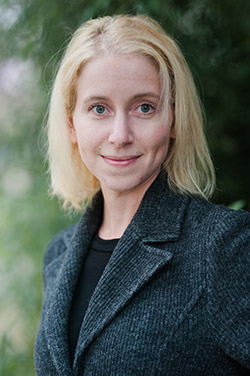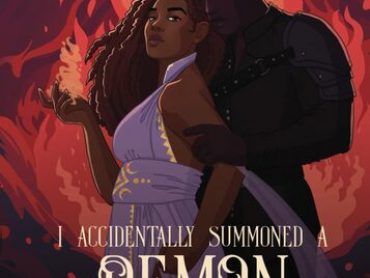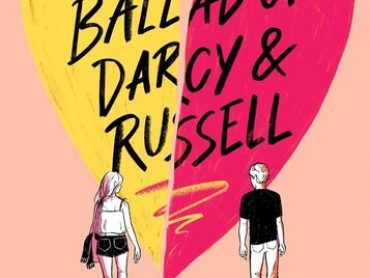Kelly Ann Jacobson is the author of Tink And Wendy. Tink And Wendy is a queer retelling of Peter Pan. The book follows Peter and Wendy’s granddaughter, Hope Darling. The novel explores three alternating perspectives, past, present, and excerpts from a book called Neverland: A History. YEM spoke with Kelly about her writing process and what her favorite part of the book was to write. She also shared her inspiration for having three alternating perspectives within her book.
Young Entertainment Mag: When did you know that you wanted to be a writer?
Kelly Ann Jacobson; Since I was five! I wrote my first book in kindergarten, and it was published by my school’s library program so that other kids could check it out. Shout out to Gwynedd Square Elementary School!
YEM: Your book Tink and Wendy is a queer reimagining of Peter Pan. Do you have a special connection to the story of Peter Pan?
Kelly: I’ve been trying to come up with what inspired me to write this book, and to be honest, I don’t remember! One of my friends back when I was in high school working at Five Below used to call me Tinker Bell because I had very short blonde hair at the time, and I had a boyfriend back then who wanted me to care for his planned colony of writers the way Wendy was supposed to care for the Lost Boys, so maybe those two things just stewed in my brain for over a decade?? All I remember is one day I had the idea for the love triangle, and that was that!
YEM: How did you come up with the idea of making this queer retelling of Peter Pan?
Kelly: The queer aspect of this book was actually the first thing I knew about the book. Queer retellings are really important to me, and especially the idea that we don’t have to follow what’s been established as canon about these characters.
YEM: What is it like to take characters already made and incorporate them into your own story?
Kelly: I think my versions of these are characters are pretty different than the originals, from their backstories to their modern day settings to their love interests, so I actually think it’s the juxtaposition of the classic character to this new version of the character that creates so much meaning. This book highlights some of what’s problematic about the classic tale, such as the idea of a boy bent on never growing up, in order to show us as we are.
YEM: What does your writing process look like?
Kelly: Optimally, I would write every morning. Realistically, that is not my life right now. I have two young children and a job as a Visiting Assistant Professor of English and Director of the Writing Center, in addition to my adjunct position, so I have quite a full plate! Over the years, I’ve learned to give myself the space to write when I can and take a break when I can’t. Definitely always in the morning, though—I’m basically useless after 11:00 A.M.!
YEM: What advice do you have for anyone who wants to be a writer?
Kelly: Write what you love. It’s a hard market and a hard way to make a living, but if you write what you love, then you’ll never see that time as wasted. I’ve written a bunch of books that will never see the light of day (thank goodness!), and that’s never bothered me because I’ve loved every second of the writing process.
YEM: What do you hope that your readers learn from reading your book?
Kelly: Hmm. Maybe how important it is accept yourself as you are and forgive the mistakes of the past as part of that acceptance?
YEM: Was there a specific part of Tink and Wendy that was your favorite to write?
Kelly: There is a really big reveal toward the end of the book, and wow, was that a great part to write—but I don’t want to tell you anything about it!!!
YEM: Tink and Wendy is told in three alternating perspectives—past, present and the history of Neverland. What inspired this idea?
Kelly: I actually wrote the then/now parts first and then added the history of Neverland later. I wanted to expand on the world I’d made and the original tale, not just in the literal content but in the deeper meaning behind it. For example, there’s one section that talks about the pranks they the Lost Boys and Tink played, with one month off when things got too dangerous and they took a break and then right back to pranks the following month. I also used those excerpts to tell Godmother Anne’s story in a really secret way, since she later has a pretty role in what happens.
YEM: What is the main difference between writing a story where all the inspiration comes from you and one where you take some of it from a story that is already told?
Kelly: I think the main difference is reader expectation, and either leaning into or diverting from those expectations for effect.
YEM: How long does the writing process take for you?
Kelly: It’s pretty quick—just a few months to write a book at this point. Big bursts of complete focus and then periods of time when I don’t write. But when I first started writing, it took me years to write a book.
YEM: Do you think you will do another reimagining of a popular story one day?
Kelly: I’d love to! They are challenging though because there are so many of them, so I’d have to have an idea that I’d be confident telling because of some unique angle on our current society that I’d be able to tell through that lens. I do have one I actually already wrote a while back, so…we’ll see if anyone ever picks that up! In the meantime, I’ll be writing a lot of short stories and grading a lot of papers.





